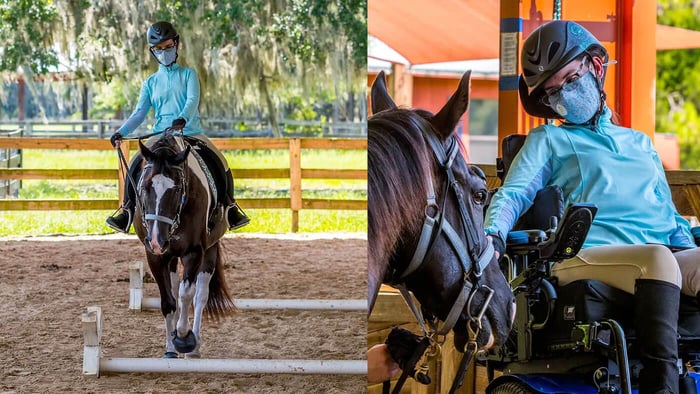Written by Bryanna Tanase
Para-equestrian sport is one of the lesser known disciplines in equestrianism. This article will be full of information to raise awareness about para-equestrians and the para-equestrian disciplines in hopes that the athletes and everyone involved will begin to receive more recognition and the importance of the inclusion of people with disabilities in equestrian sport and the equestrian world at large is acknowledged. As a para-equestrian just now beginning to make her transition to an athletic path after riding for four years, I can tell you that horses have transformed my life in many ways.

What is a para-equestrian?
Before discussing other aspects of para-equestrianism, we must first define what a para-equestrian is. A para-equestrian is a person with a permanent and measurable disability that rides horses, whether they compete or not. Para stands for parallel or next to, meaning that we are right next to able bodied riders in terms of ability and structure of the sport. Para-equestrians all have different impairments, whether physical, mental, visual, invisible, or a combination of these. Because of our impairments, we must learn to adapt the way we ride so that we can perform correctly and in a way that suits our abilities. For example, because of my cerebral palsy (CP) I do not have the strength to use my legs as a riding aid. Therefore, I must use a whip to compensate for this and to keep my horse moving forward.
What makes a good para-equestrian horse?
The key to a good horse for any para-equestrian discipline is a calm and bombproof temperament so that the horse does not spook easily. The horse must also have a correct and balanced walk, trot, and canter or lope, regardless of if the rider competes at all three gaits. Horses must also be age six or older. If the horse is younger than six, they are generally inexperienced or green, and may not be safe for riders with disabilities to ride independently. Above all, any para-equestrian mount must have a willing disposition, be easily taught, and enjoy the work that they do with their rider. A horse does not have to be an expensive import to be suitable for a para-athlete and/or perform well. Para-equestrian horses should be held to the same standard and be or the same quality as those ridden and loved by the able-bodied.
About Bryanna Tanase
Hello, I am Bryanna Tanase. I am a 22 year old Grade 1 Paradressage Rider from Tarpon Springs FL living with Cerebral Palsy. I am a lifelong horse lover who finally realized my dream of riding four years ago when I began taking lessons at Quantum Leap Farm in Odessa, FL. My big dream is qualify for the US Paradressage team and represent my country at the Paralympics! I love Kerrits because of their commitment to inclusion and support for riders of all backgrounds.

